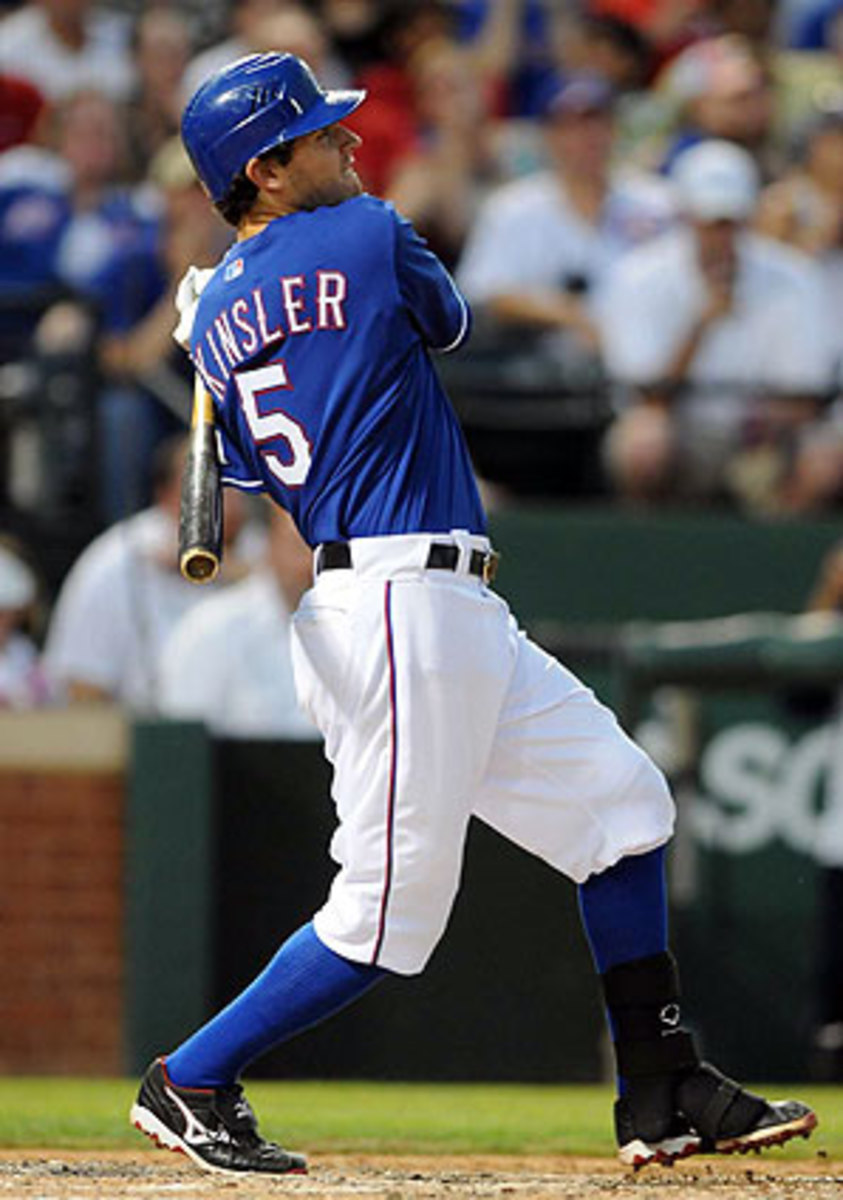White Sox, Rangers show how interleague play is affecting races
The American League, as usual, carries an edge in interleague competition into weekend play, 110-100. But the inequity of the schedule is helping to change pennant races. Here are the most extreme examples of the unintended effects of interleague play:
• The White Sox are an AL contender again only because of beating up on teams in the other league. Chicago is six games worse than .500 against AL teams (26-32), but 11 games over against NL teams (13-2).
• The Mariners are a non-factor inside their own league (22-35), but have generated optimism against the NL (8-7) -- enough to forestall an early trade of pitcher Cliff Lee.
• The Angels have as many wins in the AL as the Rangers, but Texas has destroyed NL teams (11-3), in part by winning all five of its games against the lowly Astros and Pirates -- neither of whom the Angels get to play. The Rangers have taken advantage of a cupcake schedule. They have played six of the seven worst teams in baseball (somehow missing only Arizona). They are 23-4 against the bottom of baseball's barrel and 21-24 against all others. The Rangers have only 12 wins against teams with a record of .500 or better -- tying the Orioles and Pirates for the fewest in baseball -- and yet they sit in first place with the biggest lead in baseball.
• The four NL teams in fifth place or worse (Washington, Pittsburgh, Arizona and Houston) are 13-38 against the AL, a .255 winning percentage. The Tigers were lucky enough to play three of those four scuffling teams. The team they are competing against for the AL Central title, the Minnesota Twins, get to play none of them.
The Oakland Athletics are fading from contention because of an abysmal offense, and much of the blame falls to the club's inability to develop or acquire power hitters, especially in the outfield. Newly acquired Conor Jackson (career high: 15 home runs) is just the latest in a bizarre collection of many unremarkable outfielders (Eric Patterson, Jake Fox, Coco Crisp, Gabe Gross, etc.), not unlike collections of novelty salt and pepper shakers, lawn ornaments or spoons with the likenesses of U.S. presidents.
After last season, in which Oakland outfielders hit fewer home runs (39) than every other AL outfield except Kansas City, the Athletics get even less bang for their buck this year. They have used 11 outfielders to hit a total of 12 homers, the fewest in the league. Their slugging percentage is also the worst.
No one expects Oakland to buy elite power, the game's most expensive commodity, on the free agent market. But the club's track record for developing homegrown impact outfielders is poor. In the 28 years since Jose Canseco was drafted in 1982, only two homegrown outfielders have hit even the modest amount of more than 20 homers for Oakland: Nick Swisher (drafted in 2002) and Ben Grieve (1994).
Stephen Strasburg quickly is establishing a reputation as a great finisher. Of course, that has nothing to do with an ability to throw complete games -- not with the reins Washington keeps tight on its franchise pitcher. No, it's the ability to put away hitters that makes Strasburg extraordinary. Strasburg's stuff is so good that a hitter essentially is finished with making contact when he gets two strikes against the rookie.
Through Strasburg's four starts, 57 hitters had their turn at-bat against him determined with a two-strike pitch -- and 41 one of them struck out, a 72 percent putaway rate. How impressive is that? The league average is 38 percent. Tim Lincecum won Cy Young Awards and strikeout titles with putaway rates of 56 and 50 percent. And Pedro Martinez, in his sublime years of 1999 and 2000, had putaway rates of 59 percent each time.
Strasburg can't possibly maintain such an amazing rate. But, like Martinez, he has three equally effective out pitches. He has so many weapons to finish off hitters that Strasburg will continue to run up big strikeout numbers.






